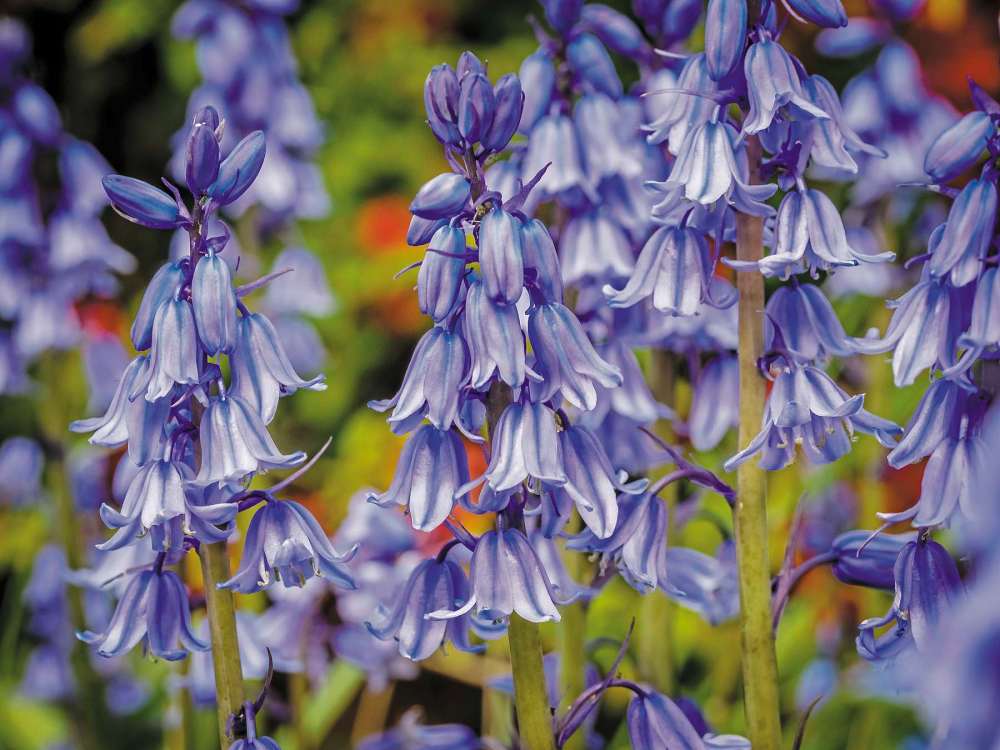We must beat back the purple invader
Advertisement
Hey there, time traveller!
This article was published 04/06/2018 (2712 days ago), so information in it may no longer be current.
An invader has taken root in the yards and laneways and natural spaces of St. Vital.
It’s name is creeping bellflower and its an invasive plant species brought here from Europe, whose appearance at its various stages — ranging from inconspicuous to pretty — leaves most people ignorant that it is a problem. In its early stages, the plant forms a thick mat with a deep and intricate root system. In its mature form, its stems can grow nearly a meter tall with blue/purple flowers on the top.
When I first moved into Glenwood three years ago, I had little experience with yard maintenance, having lived in apartments most of my adult life. When I took the mower and weed whacker to our yard, I left the large, pretty flowering plants untouched, figuring they came with the home and it wouldn’t be right to rip them out. I’ve since learned I was wrong.

Campanula rapunculoides” is an extremely hardy, perennial weed that was brought to North America as a decorative garden plant. Once it goes to flower, it can spread over 3,000 seeds and spread quickly across whole neighbourhoods.
It chokes and forces out native species, and is incredibly hard to remove. Even a tiny amount of remaining root (and they can go as deep as two feet) can enable the entire plant to re-sprout. The more mature form provides a thick, almost carrot-like root just beneath the plant. It prefers dry shade but can grow in most light and moisture conditions. It can lay dormant for years, and is a very challenging enemy of gardens and lawns.
Its impact isn’t limited to gardens however. Old St. Vital lies alongside the beautiful riparian ecosystem of the Seine River, which is perhaps most impacted by this plant. Native animal species such as deer don’t eat it, and it forces out indigenous plant species. Obviously, unlike in the lawns and gardens of the neighbourhood, there is no one on the riverbank battling against it.
So what can we do? It’s a tough enemy to fight, but it can be fought.
The only herbicides creeping bellflower responds to are those containing glyphosphate. To physically remove it, the best thing to do is use a pitchfork when the soil is damp, dig deep and pull out the entire plant out.
At the very least, homeowners and renters can chop the maturing plants before they go to bloom, to arrest their spread.
The spread of creeping bellflower can be slowed and maybe even reversed if residents take a proactive approach to containing it. Let’s give our indigenous plant species a fighting chance. Let’s plant and nurture other beautiful plants that don’t spread so rapidly and keep our neighbourhood beautiful and healthy.
Ryan Palmquist is a community correspondent for St. Vital.

Ryan Palmquist
St. Vital community correspondent
Ryan Palmquist is the managing director of Save Our Seine, a Ward 3 trustee for the Louis Riel School Division, and a community correspondent for St. Vital.
Our newsroom depends on a growing audience of readers to power our journalism. If you are not a paid reader, please consider becoming a subscriber.
Our newsroom depends on its audience of readers to power our journalism. Thank you for your support.




